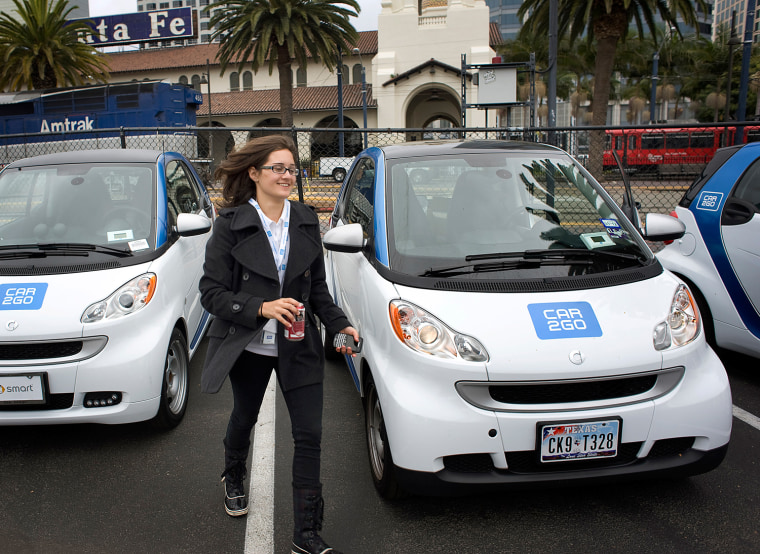Sharing a car used to mean squeezing in with co-workers in the neighborhood carpool, or maybe borrowing a friend’s keys for a quick errand. Now, car-sharing services have a whole new look, and they’re poised to zoom in popularity as they offer alternatives for the millions of people who don’t want to use their own vehicles.
A recent study by market research firm Navigant Research predicts that the number of members subscribing to car-sharing services worldwide will surge by more than 420 percent before the end of this decade – from the current 2.3 million to more than 12 million.
Global revenues are expected to grow even more rapidly, from an anticipated $1 billion this year to $6.2 billion in 2020, according to Boulder, Co.-based Navigant Research.
For a hint at the market potential, consider that Hertz, Avis and other traditional rent-a-car firms have purchased pioneers in the short-term rental market, such as ZipCar, over the last couple of years. And Daimler AG has its own service, car2go.
(Read more: Car-sharing could become big business for Daimler, says CEO)
Car-sharing services offer an alternative to the traditional vehicle rental approach by targeting those who might have need of a vehicle for as little as an hour, rather than those who want one for a day or more. In most cases, customers access vehicles at unmanned lots or even at reserved, street-side parking spots.
There are a number of variants to the theme. Pioneering firms like ZipCar offer new vehicles, much like a more traditional rental company such as Avis. But there are other approaches, such as the one taken by RelayRides, which partners with individual owners who want to earn some money when, say, they are at work, by renting out their vehicles.
San Francisco-based RelayRides recently partnered with OnStar to make it easy for a customer to gain access to one of the service’s vehicles – which might be parked in an owner’s driveway or, perhaps, at a commuter train depot. A special OnStar app allows an authorized customer to unlock the vehicle and drive it away, keeping track of billing in the process.
“The advent of mobile apps and vehicle connectivity is driving growth in carsharing services,” suggests Navigant Research.
(Read more: Is car-sharing one reason America’s “driving boom” is over?)
But the broader appeal, senior research analyst Lisa Jerram says, is that, “Car sharing offers members the ability to enjoy mobility without the expense and hassle of owning a car, or the need to frequently rent a vehicle from a traditional car rental agency.”
The pace of growth is significant and is expected to only accelerate, according to Navigant’s study. A handful of brands now dominate, and there has been a rush by traditional rental companies to stake out a position in this new world. Avis, for example, bought ZipCar in January.
Boston-based ZipCar claims to have more than 810,000 members and more than 10,000 vehicles in an expanding global network that now includes operations in the U.S., Canada, the United Kingdom and Spain.
Because car-sharing services allow members to rely on mass transit for much of their needs, “car sharing is viewed by both public and private entities as a powerful tool to reduce urban congestion and lower emissions of greenhouse gases,” said Jerram.
